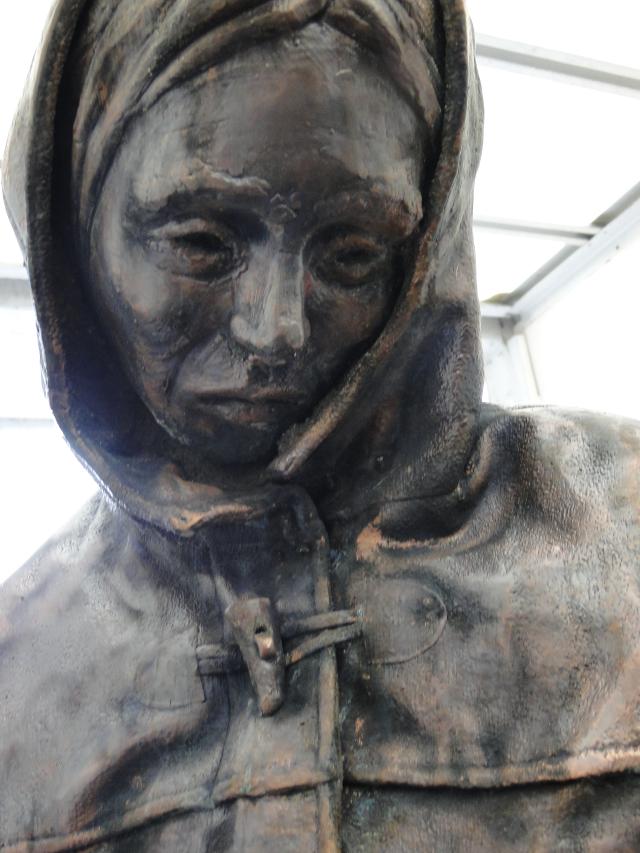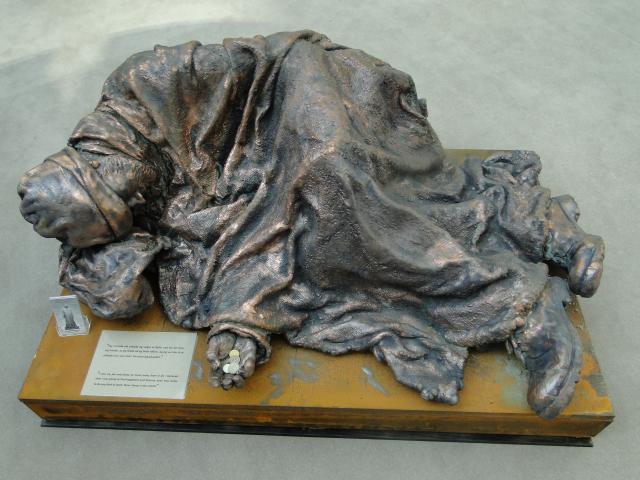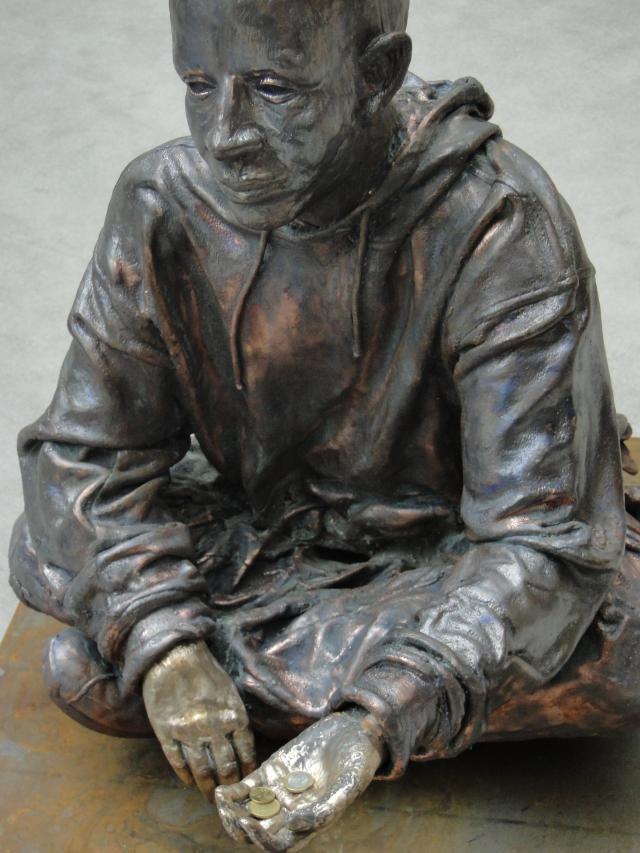Go to Gammeltorv and look at the new statues of homeless people...What is it all about? How do people react and interact with them? If the statues were real human beings, would they react differently to it? Is Gammeltorv a good place for such an instillation? Is there any other public space in Copenhagen that would be more suitable than Gammeltorv, and for what reason?
Just yesterday I stumbled upon Welcome HomeLess statues in Gammeltorv. My immediate thought was that a group of those statue performers had gathered in the square and were all doing their unmoving act - that is how lifelike they appear. But on closer inspection, I realized that they were, in fact, real statues. Crowding Gammeltorv, the 13 statues are impossible to miss. Their lifelike expressions and postures are both disconcerting and intriguing, and so compelled me to wind my way through them. On the other hand, as portrayals of homeless individuals, they exude a sadness and discomfort that makes the viewer slightly embarrassed to look. Of course, it is this double reaction that the statues are meant to create so that people's reaction to the homeless, that of both spectacle and something to try and ignore, can be addressed and critiqued.
The project is meant to make people stop and think for a moment on the problem of homelessness, to make them realize that it is all around us, and it happens to all kinds of people. To do this, the project depicts homeless people as being both men and women, young and old. Cast in metal, the people don't seem to be of any particular race. They are poignant and pull the viewer to look a little more carefully and ask, why is this person homeless?
But the most successful move that the project made was to place the exhibit on Gammeltorv, right between two parts of Strøget, the walking street, but also in close proximity to København University. Not only does the University mean that the area is progressive leaning, meaning that viewers will be more receptive to it's message, but shoppers from Strøget will have a hard time avoiding the sculptures. There is something powerful about walking down the street after spending large amounts of money in shops and then being faced with 13 statues of homeless individuals. In that moment, you are forced to reconsider your privileged position in comparison to so many other people out there. Although Strøget already has a few regular beggers that shoppers are accustomed to, the appearance of 13 sculptures overnight is something that people, regardless of how busy they are, simply can't overlook. The only other place that could have been just as good of a location would have been father up Strøget, at Amagertorv, but I do think Gameltorv is an ideal location.
Being in Copenhagen, one rarely see homeless people. Never before have I been in a city with so few people begging on the street. As a result, it is easy to forget just how lucky we. Therefore, the exhibit puts Copenhagen into perspective, and reminds the Danes that just because they benefit from the Welfare State everyday does not mean that everyone else is so fortunate.
Subscribe to:
Post Comments (Atom)





No comments:
Post a Comment